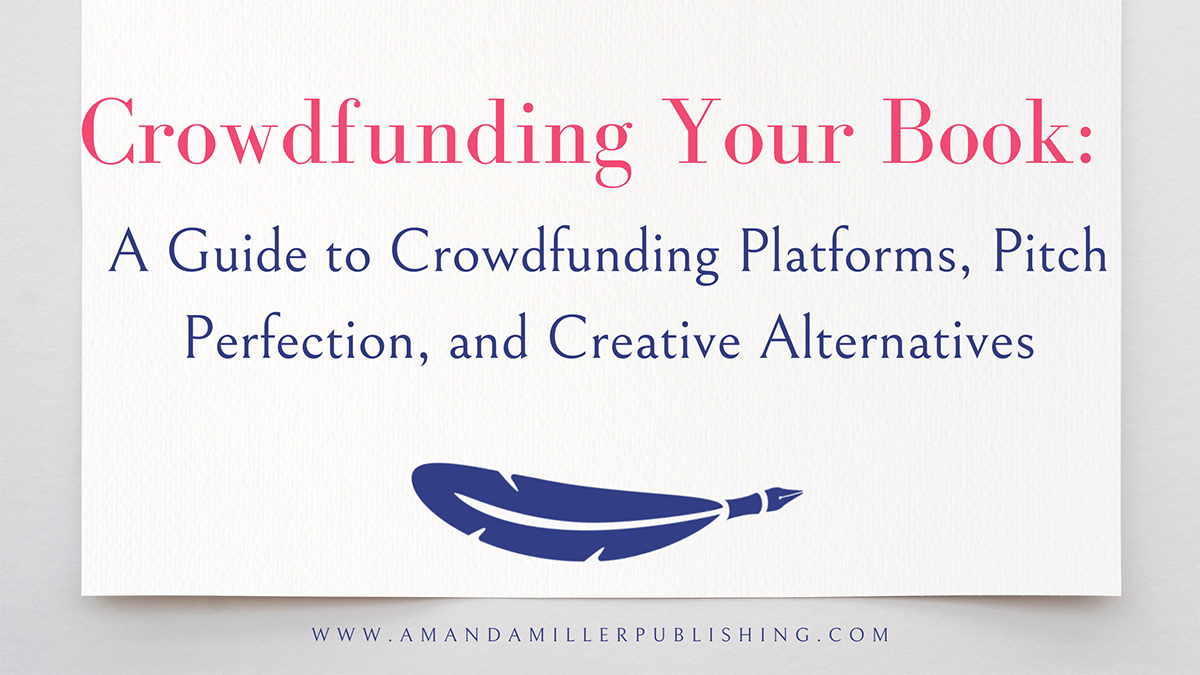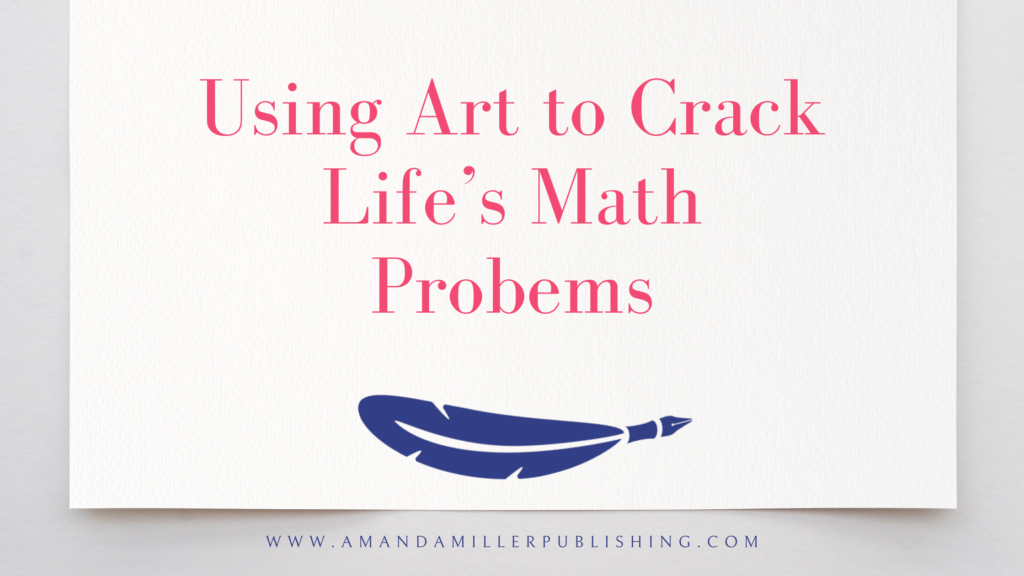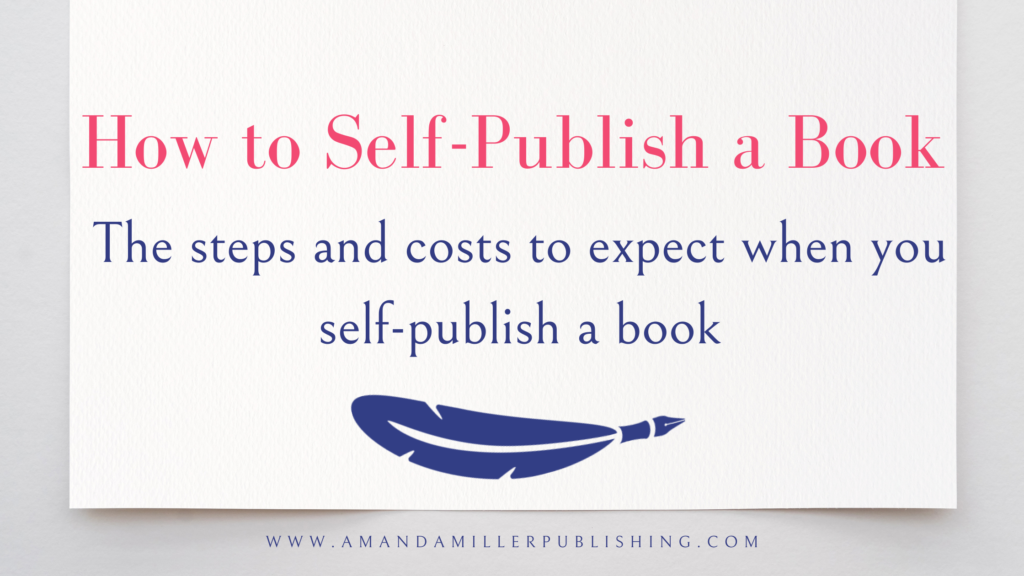
REACH OUT TO OTHERS
FOR A BOOK FUNDING ALTERNATIVE
Depending on an author’s goals, self-publishing a book can come with very little cost or can come with expenses nearing the $10,000 – $15,000 range. For most of our authors, on average, an author may spend up to $10,000 to bring their book to fruition after hiring a publishing consultant, a qualified team of editors, a cover designer, a book layout designer, and the additional production items such as an ISBN or establishing a publishing imprint. For these reasons, some authors have turned to crowdfunding as a way to offset the costs or to fund the book production completely.
Before you embark on your crowdfunding journey to bring your book to fruition, there are several key factors to consider. Let’s be clear, a crowdfunding campaign is a job. It is not a quick finance scheme. It takes a plan, a team, persistence, and follow-up. Be prepared for hard work. It’s worth noting on this point that on average less than 50% percent of campaigns reach their goal. In this article, we’ll delve into the various platforms available to authors to crowdfund, the pros and cons to each, how to set up their campaigns, and alternative avenues to crowdfunding.
The Most Popular Crowdfunding Sites
There are numerous crowdfunding platforms including those tailored specifically for authors. Yet, these platforms vary in quality and come with their own set of considerations when aligning them with your project. It’s crucial to grasp the strengths and limitations of each before making your choice. Below, we delve into the three prominent crowdfunding sites and provide essential insights into their platforms.
Kickstarter:
- Emphasis: Kickstarter primarily focuses on creative undertakings such as books, films, games, and art.
- Funding Outcome: It operates on an “all-or-nothing” principle, meaning creators must meet their funding goal to receive any funds. Failure to reach the goal results in no charges to backers.
- Diverse Categories: The platform covers various project categories, creating a diverse hub for creators.
- Backer Benefits: Creators can offer backers various rewards based on their contribution level.
GoFundMe:
- Scope: GoFundMe offers a broader scope, encompassing personal fundraising, charitable causes, medical bills, education expenses, and more.
- Funding Flexibility: Unlike Kickstarter, it accommodates both the all-or-nothing approach and flexible funding. Creators can receive contributions even if their goal isn’t met.
- Usage: It serves purposes beyond creative ventures, often addressing personal emergencies and charitable endeavors.
- Donation Focus: Contributors often donate without expecting tangible rewards, making it fitting for charitable campaigns.
Indiegogo:
- Project Diversity: Indiegogo hosts various projects, including creative initiatives, technological innovations, personal causes, and other ventures.
- Funding Models: It provides options for all-or-nothing and flexible funding models, similar to GoFundMe.
- Global Reach: Indiegogo extends its reach worldwide, welcoming creators from different countries to launch campaigns.
- InDemand Feature: Following the campaign’s conclusion, creators can continue fundraising through Indiegogo’s InDemand feature.
Crowdfunding Campaign Comparison Chart
Aspect
Kickstarter
GoFundMe
Indiegogo
Funding Model
All or nothing only – if the goal is not met, all money is refunded to backers.
Funding Model All or nothing only – if the goal is not met, all money is refunded to backers. Two options:
- All or nothing i.e. all money is refunded if target amount is not met
- Flexible – whatever money collected is retained, regardless of target amount.
Funding Model All or nothing only – if the goal is not met, all money is refunded to backers. Two options:
- All or nothing i.e. all money is refunded if target amount is not met
- Flexible – whatever money collected is retained, regardless of target amount.
Backer Rewards
Backer Rewards
Offers rewards based on contribution
Often donation-based
Rewards and donations based on project
Categories
Diverse project categories
Broad scope beyond creative ventures
Wide array of project types
Campaign Length
Typically 30-60 days
Flexible campaign lengths
Customizable campaign durations
Success Fee
5% of funds raised if goal met
2.9% + $0.30 per transaction
5% if goal met, 8-10% for non-goal campaigns
Platform Fees
Additional payment processing fees
Additional payment processing fees
Additional payment processing fees
Use Cases
Creative projects with tangible goals
Personal causes, emergencies, charitable
Various projects from creative to personal
Funding Outcome
Must meet goal for funds; no goal, no charges
Flexible funding options available
Goal-dependent or flexible funding options
InDemand Feature
Limited post-campaign fundraising capabilities
Not available
Post-campaign fundraising through InDemand
Kickstarter
Funding Model
All or nothing only – if the goal is not met, all money is refunded to backers.
Backer Rewards
Offers rewards based on contribution
Categories
Diverse project categories
Campaign Length
Typically 30-60 days
Success Fee
5% of funds raised if goal met
Platform Fees
Additional payment processing fees
Use Cases
Creative projects with tangible goals
Funding Outcome
Must meet goal for funds; no goal, no charges
InDemand Feature
Limited post-campaign fundraising capabilities
GoFundMe
Funding Model
Two options:
- All or nothing i.e. all money is refunded if target amount is not met
- Flexible – whatever money collected is retained, regardless of target amount.
Backer Rewards
Often donation-based
Categories
Broad scope beyond creative ventures
Campaign Length
Flexible campaign lengths
Success Fee
2.9% + $0.30 per transaction
Platform Fees
Additional payment processing fees
Use Cases
Personal causes, emergencies, charitable
Funding Outcome
Flexible funding options available
InDemand Feature
Not available
Indiegogo
Funding Model
Two options:
- All or nothing i.e. all money is refunded if target amount is not met
- Flexible – whatever money collected is retained, regardless of target amount.
Backer Rewards
Rewards and donations based on project
Categories
Wide array of project types
Campaign Length
Customizable campaign durations
Success Fee
5% if goal met, 8-10% for non-goal campaigns
Platform Fees
Additional payment processing fees
Use Cases
Various projects from creative to personal
Funding Outcome
Goal-dependent or flexible funding options
InDemand Feature
Post-campaign fundraising through InDemand
What are the campaign success rates based on each platform?
Based on current data displayed on each platform (August 2023), here are the campaign success rates.
Kickstarter:
- Based on all projects across all categories on Kickstarter, 40.85% have been successfully funded. However, within the specific category of publishing 37.27% of publishing projects were successful. Kickstarter’s website states: Most successfully funded projects raise less than $10,000, but a growing number have reached six, seven, and even eight figures.
GoFundMe:
- On average, the success rate for all GoFundMe campaigns was reported to be around 10-15%. However, success rates could be higher for certain categories like medical emergencies and community support.
Indiegogo:
- The overall success rate for Indiegogo campaigns was reported to be around 17-20%, meaning that a relatively small percentage of campaigns reached their funding goals.
Where are the majority of donations coming from?
According to a 2020 study by Indiana University Lilly Family School of Philanthropy, after surveying 1,535 households, they discovered donations tend to support people connected directly or indirectly to donors, such as friends, relatives, and friends of their friends. Only 5.2% of crowdfunding dollars flow to people they don’t know. This study demonstrates a common trend in crowdfunding donors, showing that most donations will come from people you already know and are in your circle. Given this information, it’s important to feel confident in reaching out to your immediate family and close friends as they will most likely be the people that support you the most.
Crafting an Irresistible Pitch
Before anything else, it’s vital to do some research on successful crowdfunding campaigns for books in your genre. Investigating the strategies and elements that resonated with backers in similar projects can provide invaluable insights. Pay attention to the storytelling techniques used in their campaign descriptions, their engagement with their audience through updates, and the creative ways they devised rewards for their supporters. This initial groundwork not only helps you understand the dynamics of effective campaigns but also guides you in tailoring your crowdfunding pitch to stand out and capture the attention of potential backers who share a passion for your literary genre.
Once you have decided on a platform that suits your goals, then it is time to create your campaign. To create a successful campaign, you will want to make it engaging and captivating. The first key to any campaign is the written copy that you will include that entices people to read and engage with your story. Below you will find the key components to include in your write-up. Once you have this nailed down, you’ll want to use the following outline to also create a welcome video to insert into the heart of your campaign.
Start here!
Tell Your Story:
- Introduce yourself: Start with a brief introduction about who you are, your background, and your connection to the project.
- Explain the project: Clearly and succinctly outline your book project’s concept, its significance, and what makes it unique.
Show Passion and Enthusiasm:
- Let your passion shine: Convey your genuine excitement for the project. Enthusiasm is contagious and can resonate with potential backers.
Visuals and Aesthetics:
- Visual storytelling: Incorporate visuals that illustrate your project, such as book covers, concept art, or scenes from your book (if applicable).
- High quality: Ensure the video is well-lit, professionally shot, and has clear audio.
Keep it Concise:
- Length matters: Aim for a video duration of 2-3 minutes. Get to the point while retaining your audience’s attention.
Script and Structure:
- Engaging hook: Start with a hook that captures attention in the first few seconds.
- Build a narrative: Progress logically from introducing the problem or need your project addresses to how your project solves it.
- Call to action: Clearly state what you’re seeking – funding – and what backers will receive in return.
Showcase Your Team:
- Introduce your team: Highlight key members if you have collaborators or experts involved in the project.
Backer Benefits:
- Explain rewards: Detail the rewards backers will receive for supporting your campaign, such as early copies of the book, limited editions, or exclusive content.
Transparency and Trust:
- Be authentic: Share the challenges, risks, and obstacles your project might face. Demonstrating transparency can build trust with potential backers.
Include Backer Testimonials:
- Social proof: If applicable, include testimonials from individuals who have read early versions of your work or are enthusiastic about your project.
Call to Action:
- Clear call to action: End the video by directing viewers to your campaign page with a strong call to action.
Editing and Music:
- Edit professionally: Edit the video to maintain a smooth flow and remove any unnecessary elements.
- Music: Choose background music that complements the mood of your video without overwhelming the narration.
Embracing Visual Elements
After crafting a compelling pitch, the next step is to create a high-quality video that complements it. According to Fundera, crowdfunding campaigns with videos earn 105% more than those without videos. Meaning, a well-produced video can significantly boost your crowdfunding campaign’s appeal and increase the chances of achieving your funding target. Continuously monitor the level of engagement and be prepared to adjust your approach based on viewer feedback.
In addition to videos, other visual components, like photographs and images, can play a crucial role, particularly if they’re relevant to your campaign. For instance, featuring a warm and approachable visage can lend your campaign a personable and trustworthy touch.
As you construct your persuasive pitch, remember to incorporate visual aids into the writing like subheadings and bulleted lists. Crafting a lengthy pitch without visual breaks can strain readers’ eyes and discourage them from reading all the way through. A well-structured pitch with visually appealing elements ensures your message is easily digestible and captivating.
Creating Backer Benefits
Depending on the platform you select to host your crowdfunding campaigns, you will be given the ability to create backer benefits. Backer benefits are the enticing rewards or incentives that authors offer to individuals who support their crowdfunding campaign. These benefits serve as a way to express gratitude to backers for their contributions and to motivate potential supporters to pledge funds.
Backer benefits can range from simple tokens of appreciation to exclusive experiences that resonate with the campaign’s theme. For authors, these benefits can include signed copies of the book, limited edition versions, digital downloads, behind-the-scenes content, personalized messages, an acknowledgment in the book’s credits, access to exclusive updates, and even opportunities to have a character named after the backer in the book.
The creativity and thoughtfulness behind these rewards can significantly impact the campaign’s success, as they enhance the connection between the author and their backers while offering something tangible in return for their support.
If you choose to include them in your campaign, here are some guidelines to follow when creating effective backer benefits:
-
- You should keep your backer benefits to three levels at maximum. Too many options will lead to analysis paralysis and may result in less pledges.
- Ensure that your lowest level backer benefit covers the costs of your expenses. For instance, if your first level provides backers with a signed author copy of the book, your minimum pledge amount for this benefit should be $25 considering you will need to purchase the book and pay for shipping.
- Ensure that the backer benefits are closely related to your book or project. The rewards should reflect the essence of what you’re creating.
- Offer a range of backer benefits at different price points. This caters to various budget levels and increases the appeal to a broader audience.
- Consider adding a personal touch to certain rewards. Handwritten notes, custom illustrations, or naming a character after a backer can create a memorable experience.
- Include a mix of physical and digital rewards. Physical rewards might include signed copies, merchandise, or artwork, while digital rewards can include ebooks, wallpapers, and exclusive digital content.
- Ensure you can deliver on the promised rewards. Avoid offering rewards that could be logistically challenging or costly to fulfill.
- Consider the value each reward offers to backers. Backer benefits should feel valuable and worth the contribution.
- Ensure that your rewards don’t infringe on copyright or intellectual property rights. Avoid using trademarks or copyrighted materials without proper authorization.
Examples of Backer Benefits
Backer benefits typically work best in tiers or levels. Below is an example of how you may create your donation or pledge tiers.
Level 1: For $25 you will get a signed author copy of the book. You may want to throw in a bookmark or a personal thank you note (or both).
Level 2: For $50 pledge you will receive a signed author copy + a bookmark + a fun downloadable freebie. For children’s book authors this may be a downloadable coloring book related to your book or it could be a highly prized resource.
Level 3: For $100, you and your local library will receive 3 author signed copies, 5 bookmarks + a virtual author visit, and early access to viewing the cover design before anyone else.
Considerations Before Crowdfunding Your Book
Before taking the plunge into setting up and maintaining a crowdfunding campaign, here are several reasons to take a step back and reevaluate whether crowdfunding is the right avenue for your book:
- Public Perception and Lifestyle Constraints: While crowdfunding can bring your project to life, it’s crucial to be mindful of how your audience perceives your funding efforts. Depending on your target audience, seeking public support might not align with your desired image. Additionally, crowdfunding can impose lifestyle limitations, requiring transparency about your financial situation and goals, which might not suit everyone.
- Personal Finance Considerations: Opting for crowdfunding might not be your only financial solution. Before going the crowdfunding route, assess whether you can manage the costs using your existing financial resources. Using a credit card, for instance, could provide a more controlled way to fund your project without the need to share your financial aspirations publicly.
- Time and Effort Demands: Crowdfunding is far from a passive endeavor. Successfully running a campaign demands dedicated effort to manage and promote it effectively. According to Fundera, campaigns that updated followers regularly raised 126% more than those with no updates, making it crucial to update your backers.You need to maintain constant engagement with your audience throughout the book production journey, keeping them updated and enthused. This can be a time-consuming process that diverts energy from your creative work.
- Fulfillment Challenges: Fulfilling backer pledges, especially for those who pledged for a copy of your book, involves a series of logistical challenges. From mailing books to creating shipping labels and sending thank-you cards, the process requires careful organization and meticulous execution. Authentic gratitude is crucial here, as backers expect a personalized and heartfelt connection.
- Emotional and Mental Investment: Running a crowdfunding campaign can be emotionally taxing. It requires sharing your vision and aspirations publicly and exposing your creative work to potential scrutiny. This can lead to added stress and pressure on top of the already demanding process of writing and producing a book.
Ultimately, the decision to crowdfund or not should align with your personal and financial circumstances, as well as your comfort level with the demands of running a campaign. Exploring alternative funding methods and thoroughly assessing the implications of crowdfunding can lead to a more informed decision that best suits your creative journey.
Exploring Alternatives: Beyond Crowdfunding for Your Book
While crowdfunding can be a potent avenue for authors to secure funding and build a community, it’s not the only route to bring your book to life. Let’s delve into some creative alternatives that might resonate with your vision:
Pay-over-time options: Pay-over-time options cater to authors who prefer not to bear the full burden of production costs upfront. This approach minimizes the immediate financial impact and provides breathing room for budgeting. PayPal and Square now have pay-over-time options for those who would rather spread their book production costs over the course of several months.
Grants and Scholarships: Research grants or scholarships specifically designed for writers. Some organizations offer funding for literary projects that align with their mission.
Writing Contests: Many writing contests offer not only recognition but also monetary rewards. Winning or placing in these contests can provide the funds you need.
In conclusion, embarking on a crowdfunding campaign for your book is an exciting journey that offers the chance to connect with a supportive community and bring your creative vision to life. However, it’s crucial to be aware of the considerable effort required to run a successful campaign. From crafting a compelling pitch to engaging your audience and managing rewards, the process demands dedication and strategic planning.
Remember, if the crowdfunding route seems daunting or isn’t yielding the desired results, there are alternative paths to consider. Ultimately, whether through crowdfunding or other means, sharing your story with the world is a rewarding pursuit that deserves your passion and perseverance.




